Spears Happy Families
Spears Happy Families.
We can only guess that Spears began producing proper Happy Family and Snap games after the success of John Jaques & Son in that area; maybe in the 1870s. Spears introduced a Quartet game using flowers, composers and poets as families in 1903. This was followed with German ‘beautiful cities’ and countries quartet games with black and white photographs. When Dondorf was split up and sold in 1929 Spears acquired the card games only and continued to issue the animal, bird, and flower series of quartets.
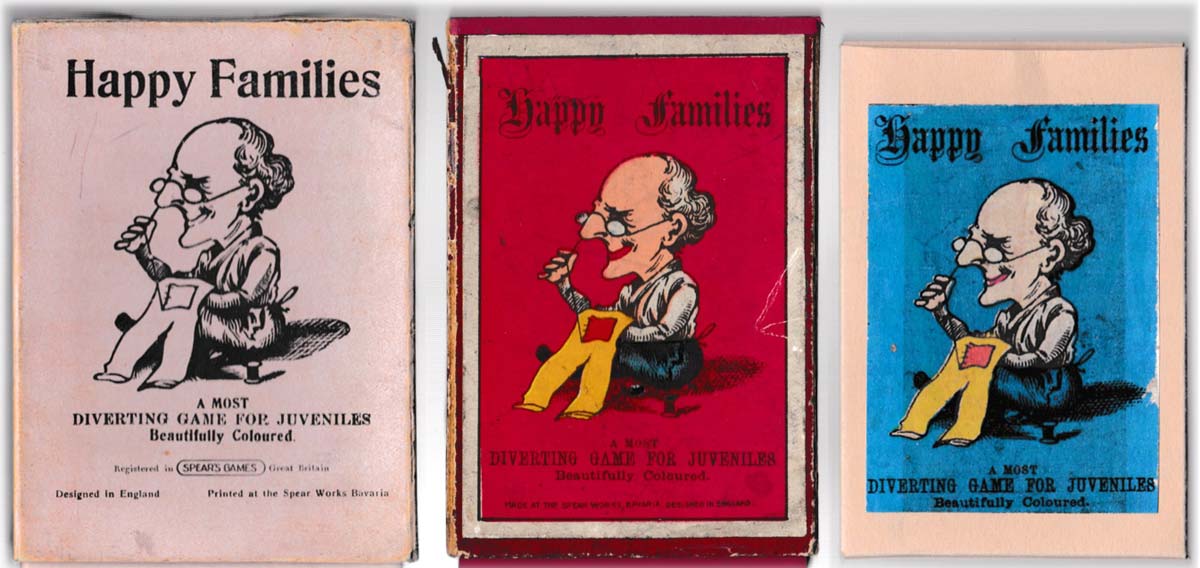
Above: early Spears Happy Families boxes, designed in England, printed at the Spear Works, Bavaria. Images courtesy Rex Pitts.
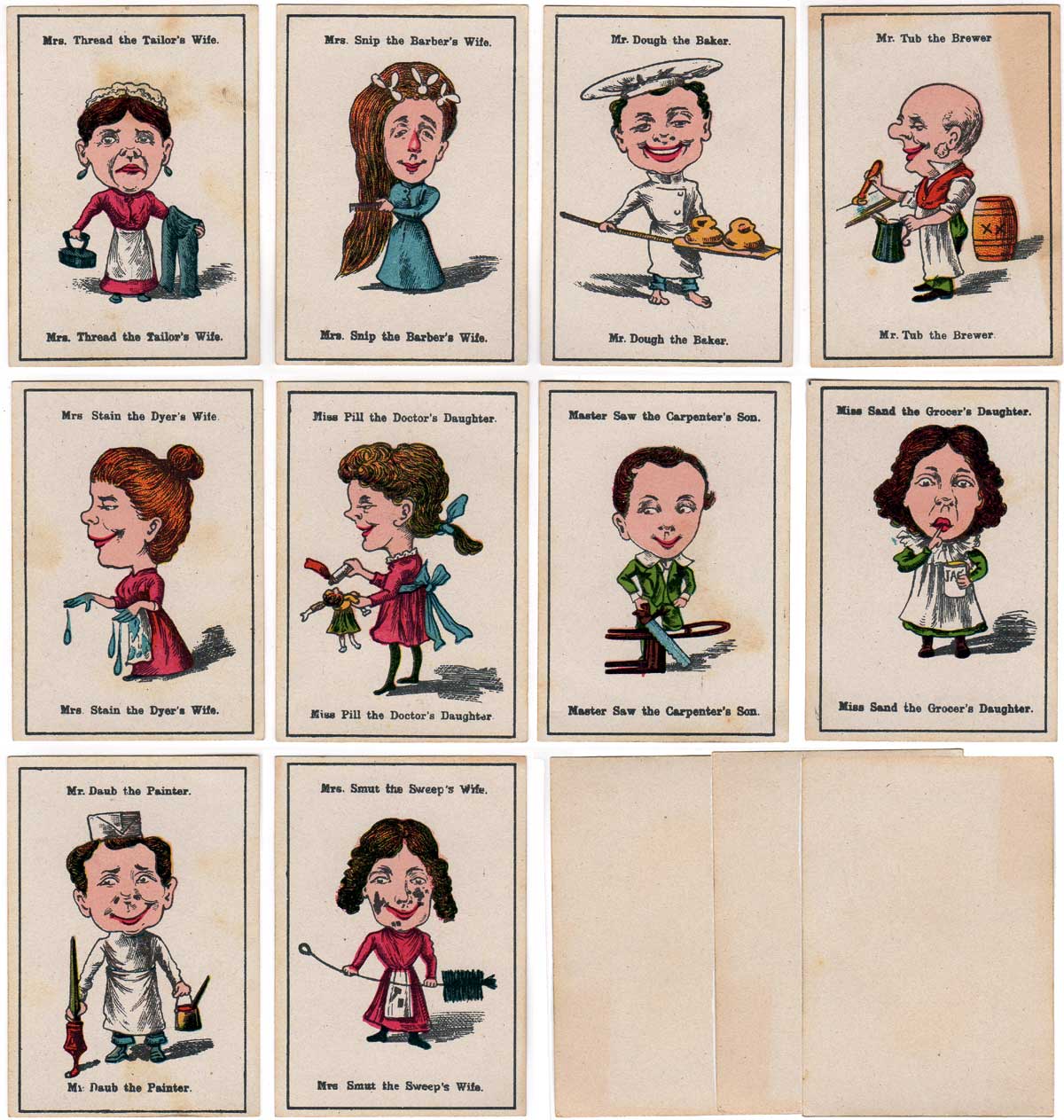
Above: the earliest cards were square cornered, with rectangular borders and plain backs, printed in Bavaria. The captions appear at the top and bottom of each card, in the same way as John Jaques’. Image courtesy Matt Probert.
Before the war, probably in 1938/39, the Spears factory in Nuremberg was confiscated during the Aryanisation campaign and many of the Spears family and relatives had their businesses stolen with a non Jew placed in charge. Many were murdered but the son of Hermann Spear, whose name was Herbert, left Germany for England to join his Uncle Richard Spear at Enfield. When the war work was done they begun again almost from scratch. A condition which applied to the two factories was that once the German factory was restored to the family the English factory made no German goods while the German factory made no English goods. By 1984 the German factory was closed but the Enfield factory is still working today.
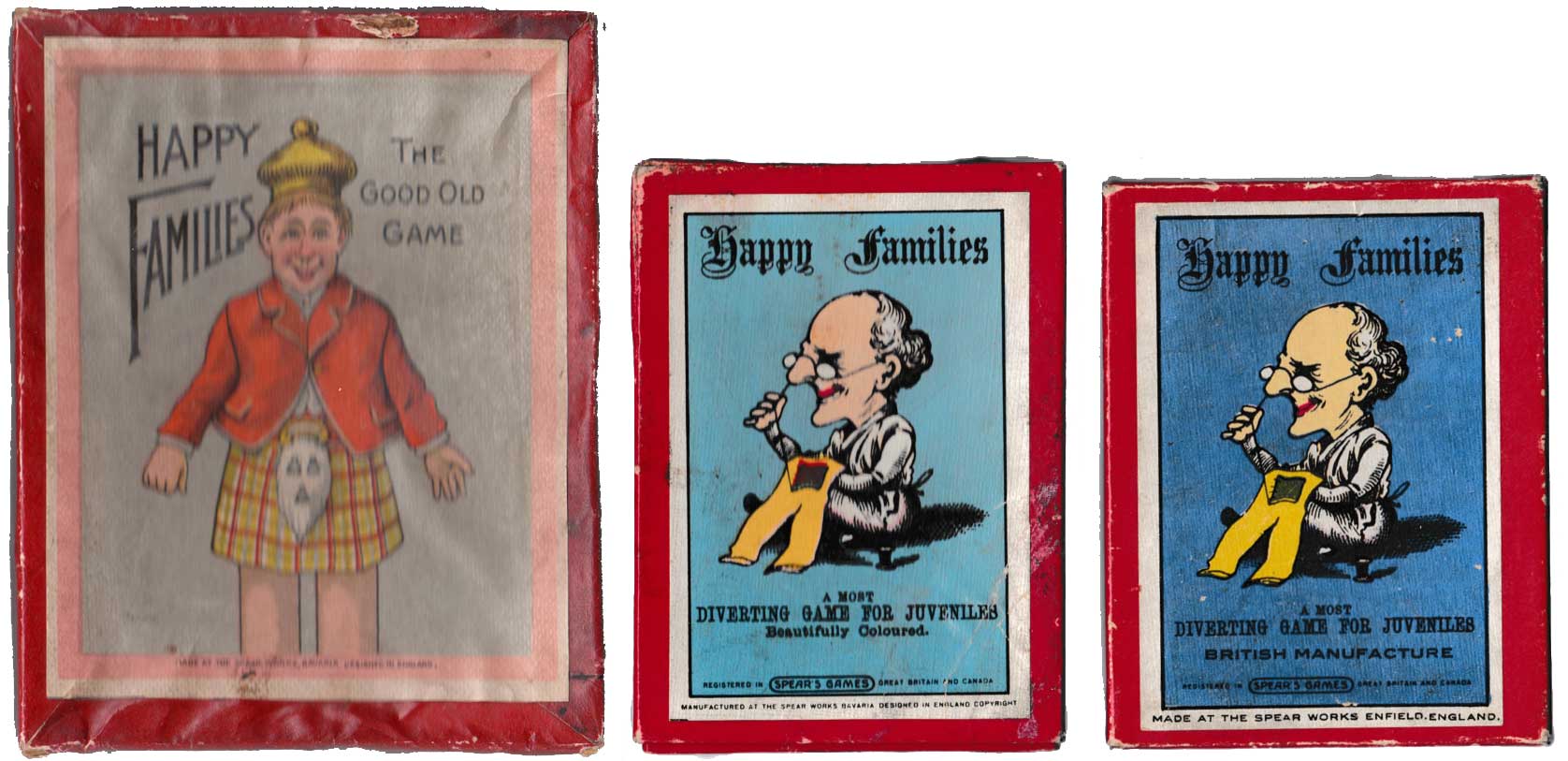
Above: the cards in the jolly Scotsman box are the same as all the others. Backs were plain or a single colour (usually pale blue). Note that the place of printing stated on the boxes changes from Bavaria to Enfield (boxes 2 & 3) when they started to manufacture in the UK. This was probably in 1948 when production of games was begun again having spent the war producing wartime goods. Rounded corners were introduced around this time. Images courtesy Rex Pitts. See the Rules►
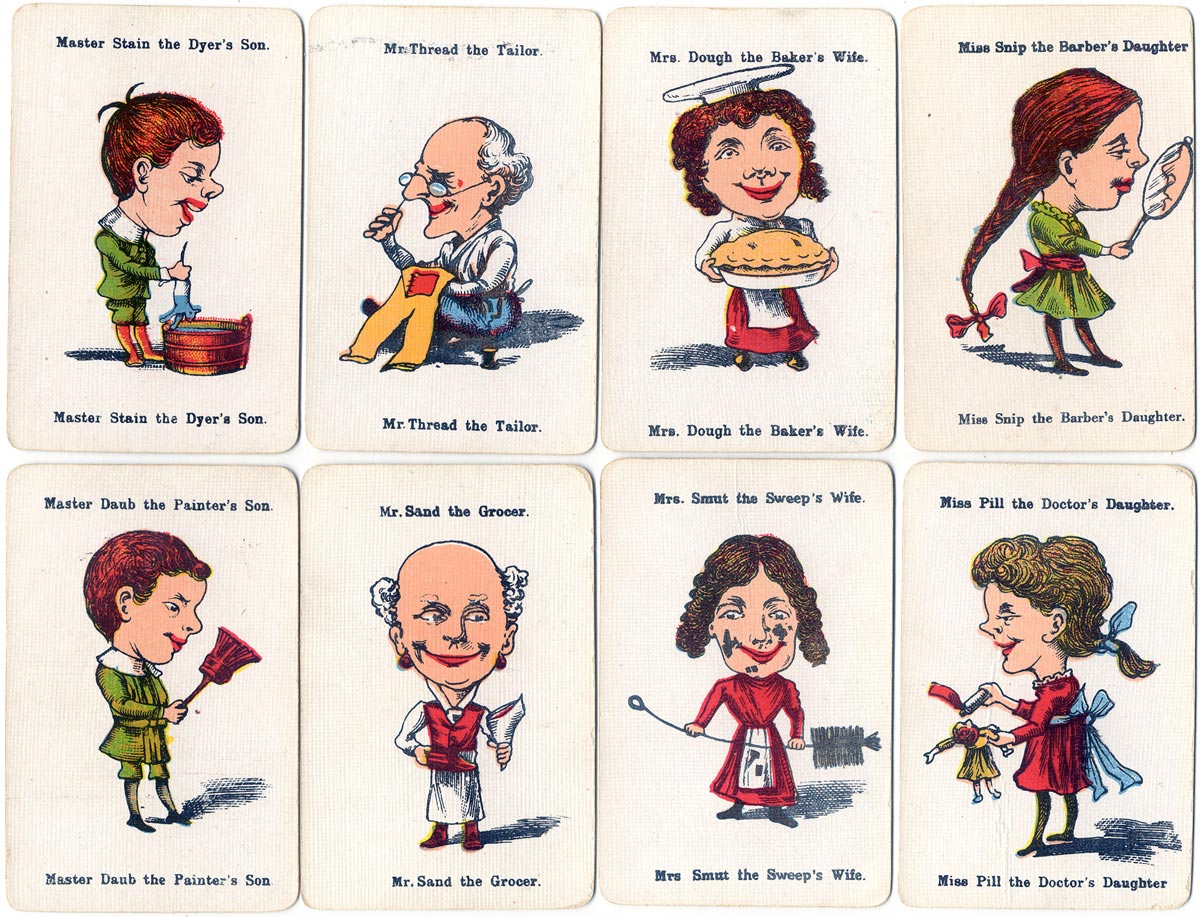
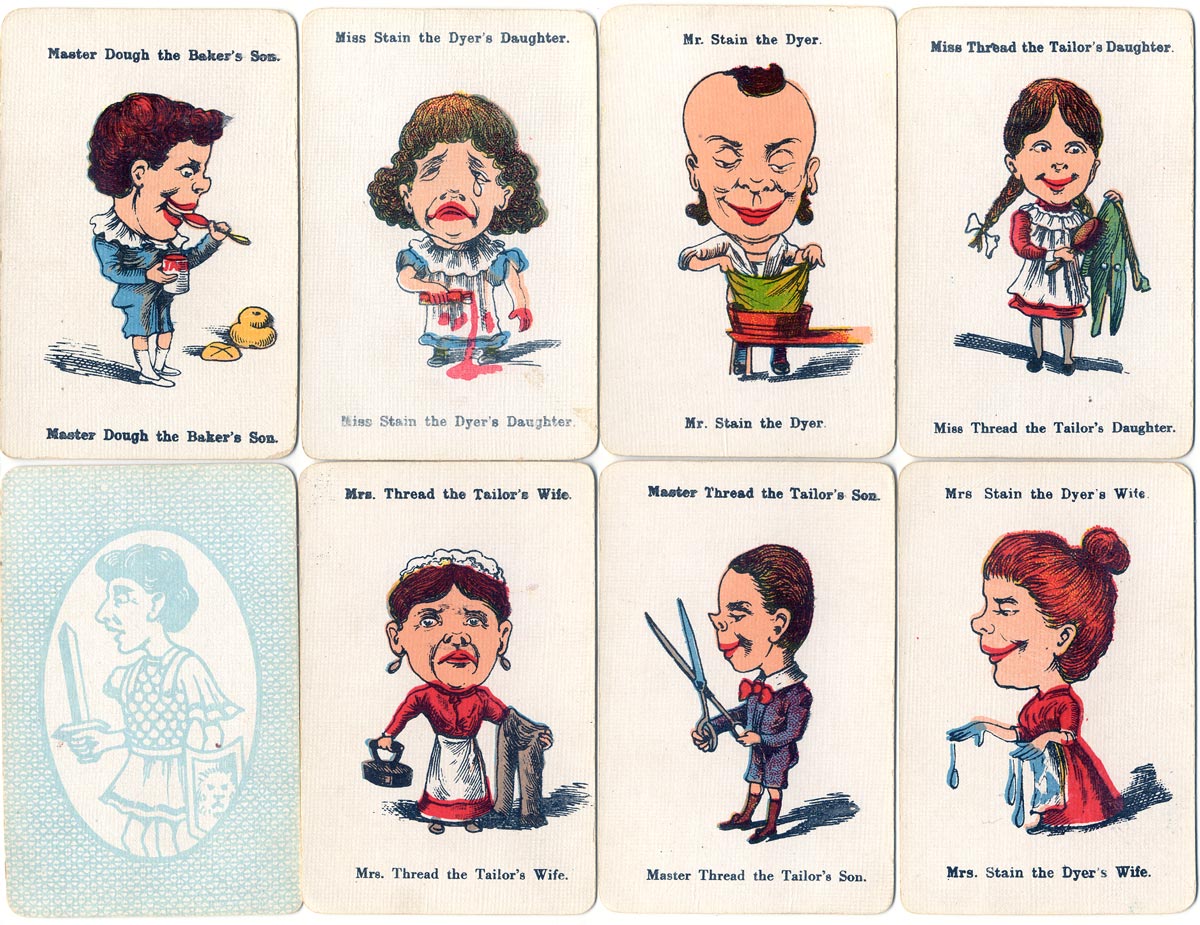
Above: later editions of Spears Happy Families (after c.1948) were produced with rounded corners and no borders.
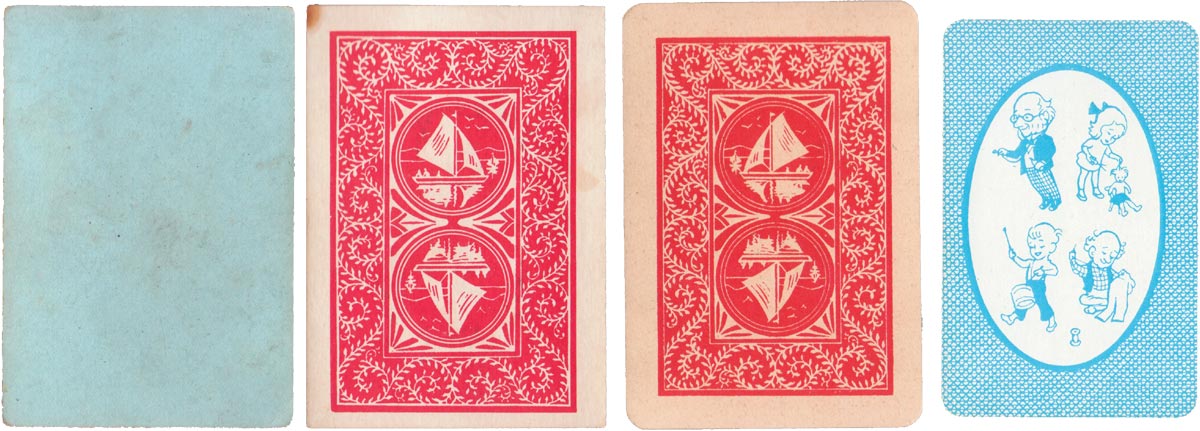
Above: over the years the backs progressed from plain to pictorial, and the corners from square to rounded. Images courtesy Rex Pitts.
Around the same time the game’s description on the box changed from “A Most Diverting Game for Juveniles” to “The Amusing Party Game”.
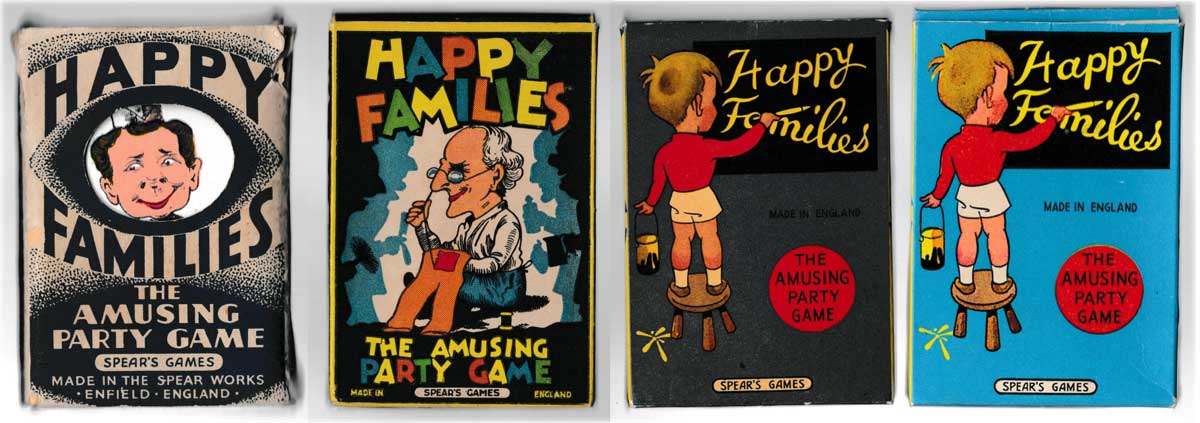
Above: boxes from games made in the Spear Works, Enfield, Engalnd. Images courtesy Rex Pitts.
From the next box (with multi coloured lettering) the card designs become the “alphabet” pattern a completely different one. In the first of these the alphabet letter was in the top right hand corner but later edition it was moved to the top left position. It is likely that it was to facilitate reading a fan of cards in the left hand, most people being right handed.
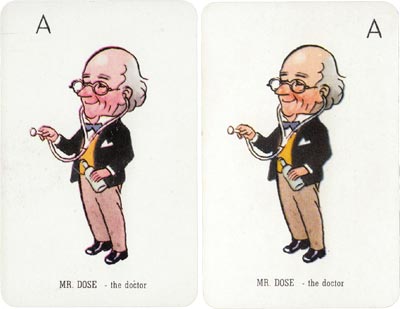

CREDITS & FURTHER REFERENCES
Images, information and research courtesy Rex Pitts, with additional research from Matt Probert.
“The Games We Play” the history of J W Spear & Sons by Helmut Schwarz & Marion Faber published by the Nuremberg Toy Museum 1998

By Rex Pitts (1940-2021)
Member since January 30, 2009
Rex's main interest was in card games, because, he said, they were cheap and easy to get hold of in his early days of collecting. He is well known for his extensive knowledge of Pepys games and his book is on the bookshelves of many.
His other interest was non-standard playing cards. He also had collections of sheet music, music CDs, models of London buses, London Transport timetables and maps and other objects that intrigued him.
Rex had a chequered career at school. He was expelled twice, on one occasion for smoking! Despite this he trained as a radio engineer and worked for the BBC in the World Service.
Later he moved into sales and worked for a firm that made all kinds of packaging, a job he enjoyed until his retirement. He became an expert on boxes and would always investigate those that held his cards. He could always recognize a box made for Pepys, which were the same as those of Alf Cooke’s Universal Playing Card Company, who printed the card games. This interest changed into an ability to make and mend boxes, which he did with great dexterity. He loved this kind of handicraft work.
His dexterity of hand and eye soon led to his making card games of his own design. He spent hours and hours carefully cutting them out and colouring them by hand.
Related Articles

Scientific Whist
“Scientific Whist” : standard cards with instructions for play on the faces by Chas Goodall & Son, 1...

Agent Provocateur
Branded lingerie collection in a pack of pin-up playing cards.

Nimbus playing cards
Mike Steer’s weather-themed pack with suits in four colours and backs for cardistry.

Agatha Christie and Playing Cards revisited
Agatha Christie uses card-play as a primary focus of a story, and as a way of creating plots and mot...

The Decadent Deck
Studies in the eroticism of the female body by Inge Clayton.

Historic Shakespeare
“Historic Shakespeare” playing cards featuring Shakespearean characters by Chas Goodall & Son.

Copechat Paramount Sorting System
Preserving the past: a specimen deck showcasing edge-notched cards and their ingenious sorting syste...

Heartsette by Herbert Fitch & Co, 1893
A glimpse into a busy print and design office in late Victorian London.

Rap Rummy
Rap Rummy made by Parker Brothers in 1926, only 4 years after the discovery of King Tutankhamen’s to...

Batman® playing cards
Batman playing cards published by InterCol of London 1989.

Can You Believe Your Eyes?
“Can You Believe Your Eyes?” playing cards featuring visual illusions & other oddities.

Pastime Playing Cards for the Blind
The “Pastime” Playing Cards for the Blind manufactured by Goodall & Son Limd., c.1910.

The European Interchanges Quartets
A card game based around motorway intersections from European countries.

Songs with Flute accompaniment
Eighteenth century English engraved cards with music for voice and flute.

Love Tests
Vintage novelty “Love Test” cards of a slightly saucy nature but all in good fun!

Briefmarken-Quartett
Quartet game featuring postage stamps from the Zones of Occupation in post-WWII Germany.
Most Popular
Our top articles from the past 28 days






